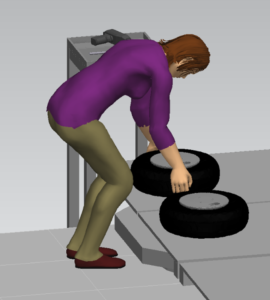Frank Costa – Manager, System Integration Services
Introduction
Sandalwood worked with a privately held global U.S.-based manufacturing company with a proud tradition of delivering high-quality products and services to both enterprise and consumer-level customers around the world. 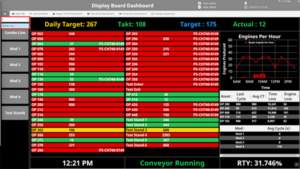 They recently launched a new flexible assembly line at one of their manufacturing facilities. Along with this new line, they wanted a scalable platform to unify SCADA and HMI systems as well as their testing, production, process, and reporting infrastructures.
They recently launched a new flexible assembly line at one of their manufacturing facilities. Along with this new line, they wanted a scalable platform to unify SCADA and HMI systems as well as their testing, production, process, and reporting infrastructures.
Leveraging both Ignition’s Perspective and Vision components, a modular and scalable system was created to rapidly deploy templatized HMIs for machine control, collect available test and production data from the shop floor, and aggregate that information into useful production board displays, operator interfaces, production dashboards, and executive reports. This initial push is only the first phase of a larger scale digital transformation plan, powered by the Ignition platform.
Establishing parameters and rules of engagement
Sandalwood is a multi-national company with offices in the US, Canada, and Mexico and has over 30 years of experience in automotive and discrete manufacturing. When Sandalwood was approached to assist the client with their initial Ignition implementation, Sandalwood and the customer jointly agreed to take a step back to assess and document their specific goals and requirements.
Using a workshop structure, Sandalwood delved into the current process and procedures in place and started outlining the various tasks and systems presently being used on the client’s other manufacturing floors.
With this initial investigation as an essential scaffold, Sandalwood began reviewing each process, evaluating the various software and infrastructure dependencies while mapping out a conversion strategy from these disparate and siloed systems into a uniform and cohesive manufacturing systems plan.
After the workshop, a framework was presented to the client that outlined an implementation blueprint, segmented into detailed short-term needs as well as medium and long-term requirements; each item was modularized and built upon the superstructure of the earlier modules.
Each module would be built and integrated using the Ignition Platform with three basic principles:
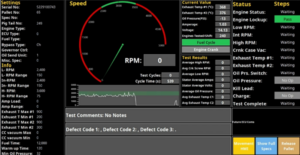
- Modules would be made with flexibility in mind to allow for future expansion.
- No “Black Box” implementations.
- All portals would be web-based.
With the short-term goals in hand and rules of engagement outlined, both the client and integrator were ready to move forward.
Laying the groundwork
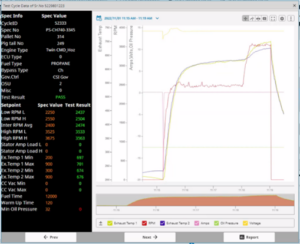 Before the workshop, the client’s goal was to implement a system that would be used for collecting test information at end-of-line test stands to generate “test signatures” for data retention and analysis purposes. As this was a flexible manufacturing line, the plan was to be able to support numerous product variations. As such, each product would have different testing parameters. All this information was to be made available for quality assurance, production/product engineers, and operators at both the test stands and repair areas.
Before the workshop, the client’s goal was to implement a system that would be used for collecting test information at end-of-line test stands to generate “test signatures” for data retention and analysis purposes. As this was a flexible manufacturing line, the plan was to be able to support numerous product variations. As such, each product would have different testing parameters. All this information was to be made available for quality assurance, production/product engineers, and operators at both the test stands and repair areas.
These initial goals required machine control through templatized HMI screens, interfaces for test and repair dashboarding, repair operator screens, and test parameter master data maintenance screens.
With a better understanding of the client’s digital transformation requirements and path, more modules were included in this first phase including asset management, shift management, production dashboarding, process annunciation, and reporting.
Throughout this entire exercise, the full capabilities of the Ignition software were on display:
- The ability to enable machine control via either Ignition Perspective or Vision module was key; due to the requirement to interface with other Windows applications, it was decided that a Vision client would be used as the primary operator interface. This allowed Vision to run in parallel with the other required native software and switch between them, as necessary. Future phases will investigate integrating the functionality into a single Vision-based application.
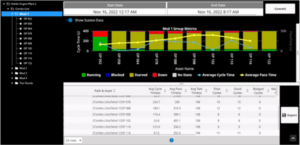 Ignition’s library of device connectors was needed to enable all data acquisition requirements. The data flow would be logged via either transaction groups or through Ignition’s Tag Historian module, thus allowing for both discrete and time-based data capture.
Ignition’s library of device connectors was needed to enable all data acquisition requirements. The data flow would be logged via either transaction groups or through Ignition’s Tag Historian module, thus allowing for both discrete and time-based data capture.- Since Ignition can interface with existing data infrastructures and systems via both native SQL interfaces as well as REST API calls, existing processes, and systems could still be used and populated via the previously mentioned data acquisition paradigms. This allows for continuity in process and parallel workflows while implementing the digital transformation migration paths.
- Ignition’s Perspective module allowed for the quick design and development of fully web-enabled interfaces. Thanks to the embedded tools, user portals, and dashboards were developed for both traditional PC-type interaction as well as tablet-based devices.
- The embedded reporting system within Ignition allowed for both time and event-based reports to be generated and sent as needed. Coupled with the Shift Management module (created by Sandalwood) and Ignition’s embedded user group controls, this allowed for total control over report broadcasting based not only on the user group level but also on production patterns.
Talk is cheap, but the results speak for themselves
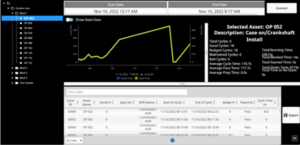 Thanks to Ignition’s rapid deployment model coupled with its pain-free license structure, getting Ignition up and running within the client’s IT infrastructure was quick and painless. Within 6 hours of receiving all IT clearance and needed permissions, both a primary and secondary instance of Ignition was up and communicating with backend databases connected to multiple systems as well as with networked equipment.
Thanks to Ignition’s rapid deployment model coupled with its pain-free license structure, getting Ignition up and running within the client’s IT infrastructure was quick and painless. Within 6 hours of receiving all IT clearance and needed permissions, both a primary and secondary instance of Ignition was up and communicating with backend databases connected to multiple systems as well as with networked equipment.
Modules that were developed within Sandalwood’s lab and development environment were easily integrated into the newly configured production system, allowing end users (with the proper access) the ability to start configuring system parameters by the end of the first day.
Within the first 16 hours of spinning up the production servers, time series and discrete data from test stands were being collected and were accessible by commissioning engineers for analysis; within 24 hours, discrete production data was flowing in the pre-configured dashboards and reporting data.
 Thanks to the flexibility of Ignition’s UDT templates, any data acquisition changes needed were quickly found, rectified, and implemented in real time.
Thanks to the flexibility of Ignition’s UDT templates, any data acquisition changes needed were quickly found, rectified, and implemented in real time.
Using a combination of industry knowledge, prioritizing requirements, and the Ignition platform, Sandalwood was able to quickly develop and deploy the first phase of a tailormade system, with room to expand and integrate other systems at the pace set by the client.

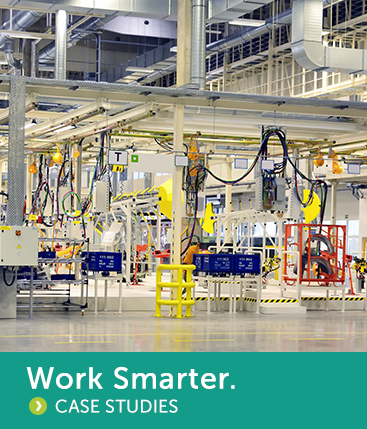






 Why Sandalwood?
Why Sandalwood?


 We are a one-stop-shop for launching job rotation for any employer from conception to implementation. Our experts tailor our services to meet the needs of our customers by collaborating with them throughout the entire process. We do not offer cookie cutter solutions for job rotation because the needs of employers vary significantly.
We are a one-stop-shop for launching job rotation for any employer from conception to implementation. Our experts tailor our services to meet the needs of our customers by collaborating with them throughout the entire process. We do not offer cookie cutter solutions for job rotation because the needs of employers vary significantly. Why Sandalwood?
Why Sandalwood?



 Sandalwood is pleased to offer solutions above and beyond the traditional ergonomic assessments. With an in-depth knowledge of various digital human modelling software suites, integration and adoption to your health and safety programs has never been easier. Sandalwood is experienced in ergonomic program design as well as industry leaders in digital human modelling services. We have a diverse team that is able the leverage the results from the digital human model to provide in depth risk assessments of future designs and current state. Sandalwood is also able to pair these assessments with expertise and provide guidance on the best solution for you. Sandalwood is also on the forefront of emerging technologies and able to integrate Motion capture, Wearables, and extended or virtual reality into your ergonomic program.
Sandalwood is pleased to offer solutions above and beyond the traditional ergonomic assessments. With an in-depth knowledge of various digital human modelling software suites, integration and adoption to your health and safety programs has never been easier. Sandalwood is experienced in ergonomic program design as well as industry leaders in digital human modelling services. We have a diverse team that is able the leverage the results from the digital human model to provide in depth risk assessments of future designs and current state. Sandalwood is also able to pair these assessments with expertise and provide guidance on the best solution for you. Sandalwood is also on the forefront of emerging technologies and able to integrate Motion capture, Wearables, and extended or virtual reality into your ergonomic program.
